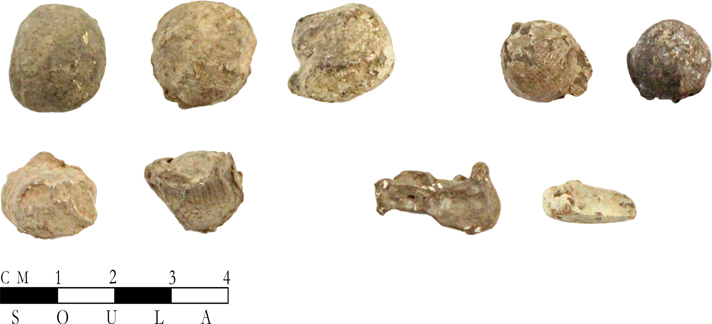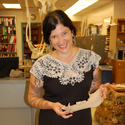Digging Jacksonville – July 2017
The Rogue River War of 1855-56 marks a pivotal point in the settlement of Oregon. The conflict centered on the years of hostile and violent encounters between the Native Americans and settlers during the Gold Rush in Southern Oregon. The War was fought across southwestern Oregon and concluded with the removal of a majority of Rogue River and Southern Oregon Native Americans to the Siletz and Grand Ronde reservations.
The Southern Oregon University Laboratory of Anthropology (SOULA) has been working on data recovery and excavations from Rogue River War sites since 2004. In their work, many lead musket balls were uncovered from across the Rogue Valley, including Jacksonville. While musket balls could be purchased, it was more common to make your own. To do this, lead would be melted in a crucible, then poured into the hole on top of a mold. The lead used was often cut pieces of ingot, which were blocks of lead, or even movable type pieces from printing presses. Once cooled, the bullet would be extracted and the sprue, which is a bit of projecting metal, and parting lines were filed off, leaving behind the round bullet. Throughout southwestern Oregon and even in Jacksonville, archaeologists have recovered musket balls and lead shot, as well as ingots, types, crucibles, and slag, which are all associated with the manufacturing of ammunition.
For my senior thesis, I analyzed a few dozen musket balls using X-Ray Fluorescence (XRF). This work was done in partnership with the Medford Bureau of Land Management (BLM). The purpose of the research project was to see how much could be learned about lead artifacts through XRF analysis and what the advantages and disadvantages of the technique were. We also wanted to look at the importance elemental composition may have in the study of battlefield archaeology, specifically, the Rogue River War.
X-Ray Fluorescence (XRF) is used to identify the presence and concentrations of elements within a given sample. I used XRF to see if I could learn what was being melted into musket balls, the amount of lead found in the artifacts, and how the composition might have differed between the musket balls used and made by the citizen volunteers and the US army versus the Native Americans. X-Ray Fluorescence is commonly used in archaeology in nondestructive analytical technique. XRF has been widely used to determine materials and manufacturing techniques, for authentication of items and the location of source materials. Archaeologists often use XRF to test soils, ceramics, projectile points, and in this case, musket balls!
The XRF data generated from this project provided a multitude of information. We were able to determine that while we label these artifacts as “lead,” it actually only represents less than 50% of the total composition. Through the XRF testing, and the analysis that followed, it’s clear that the majority of the artifacts were comprised of similar elemental concentrations across sites. At this point, it does not appear that the citizen volunteers and US Army were accessing different sources of ammunition than the Native Americans.
Featured image: A sample of musket balls, fired musket balls, slag, and lead ingots from Rogue River War archaeological sites.
Tatiana Watkins graduated from Southern Oregon University in June, with a BS in Sociology and Anthropology. She will be pursuing a career in archaeology and hopes to continue on to graduate school in a of couple of years. You can reach Chelsea Rose at rosec@sou.edu and follow SOULA on Facebook/Southern Oregon University Laboratory of Anthropology.

 Chelsea Rose is an historical archaeologist who specializes in the settlement and development of the American West. Chelsea and the Southern Oregon University Laboratory of Anthropology (SOULA) conduct archaeology across Oregon and have done several projects in Jacksonville. You can reach Chelsea at rosec@sou.edu and follow SOULA on
Chelsea Rose is an historical archaeologist who specializes in the settlement and development of the American West. Chelsea and the Southern Oregon University Laboratory of Anthropology (SOULA) conduct archaeology across Oregon and have done several projects in Jacksonville. You can reach Chelsea at rosec@sou.edu and follow SOULA on